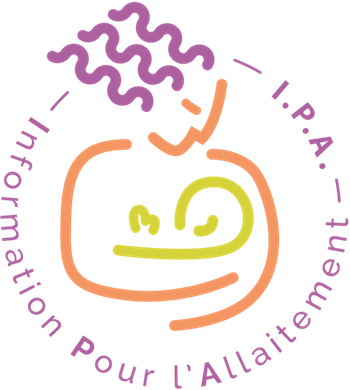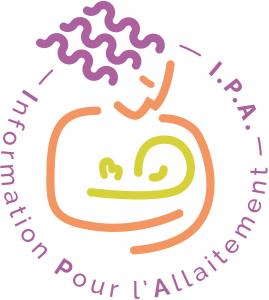Catégories
 > Pratique de l'allaitement > Connaissances vis à vis de l'allaitement > Pratique de l'allaitement > Connaissances vis à vis de l'allaitement
Connaissances vis à vis de l'allaitement |
Documents disponibles dans cette catégorie (125)
Article : texte imprimé
Ann L. Kellams, Auteur ; Kelly K. Gurka, Auteur ; Paige P. Hornsby, Auteur |Background: Many women initiate breastfeeding but do not meet their duration goals, and low-income women initiate and continue breastfeeding at lower rates than their counterparts. One-on-one counseling is associated with increased breastfeeding[...]Article : texte imprimé
Leslie Heathman, Auteur ; Crystal Clark Douglas, Auteur ; Simone P. Camel, Auteur |Background: Researchers exploring breastfeeding attitudes and knowledge among women suggest the decision to breastfeed is influenced by the male partner, yet few studies address males. Because collegiate males will soon enter fatherhood, assess[...]Article : texte imprimé
Article : texte imprimé
Mary R. Rozga, Auteur ; Jean M. Kerver, Auteur ; Beth H. Olson, Auteur |Background: Peer counseling programs have demonstrated efficacy in improving breastfeeding rates in the low-income population, but there is little research concerning why women enrolled in these programs ultimately discontinue breastfeeding. [...]Article : texte imprimé
JE Dodgson, Auteur |In the age of almost instantaneous communication between people on opposite sides of the globe and Twitter feeds relaying news as it happens, one might think that knowledge development occurs at the same speed. It does not. Although it is true t[...]Article : texte imprimé
R Haider, Auteur |Background Thirty-six percent of females are employed in Bangladesh, many in the readymade garments manufacturing industry. Inadequate access to health information, care, and long working hours makes exclusive breastfeeding particularly challen[...]document électronique
"My book, Supporting mothers who breastfeed: a guide for trainee and qualified doctors, is primarily for trainee doctors but relevant to qualified doctors too. At the trainee stage they have specialised and are working clinically. The book provi[...]Article : texte imprimé
Alba Padró-Arocas, Auteur ; Desirée Mena-Tudela, Auteur ; Eduard Baladía, Auteur |Background: Mobile applications related to health issues are currently expanding. Different uses of new technologies have produced positive results regarding breastfeeding support. Breastfeeding applications are increasing. Objective: We cond[...]Article : texte imprimé
Alissa Vieth, Auteur ; Janine Woodrow, Auteur ; Janet Murphy-Goodridge, Auteur |Background: The acceptance and support of breastfeeding in public venues can influence breastfeeding practices and, ultimately, the health of the population. Objective: The primary aim of this study was to investigate whether posters target[...]Article : texte imprimé
Ting Yao, Auteur ; Karen Blackburn, Auteur ; Cheryl Frutchey, Auteur ; Denise Burton, Auteur |Breastfeeding has numerous benefits for infants and mothers. The Chinese government attaches great importance to breastfeeding and takes measures to increase the exclusive breastfeeding rate and breastfeeding duration among women. As in many nat[...]Article : texte imprimé
Sanjay Patel, Auteur ; Shveta Patel, Auteur |Breastfeeding for all infants starting at birth and continuing until at least 6 months of age has been recommended by the World Health Organization and the American Academy of Pediatrics. The health benefits to infants and mothers have been demo[...]Article : texte imprimé
Ann L. Kellams, Auteur ; Kelly K. Gurka, Auteur ; Paige P. Hornsby, Auteur |Background: Guidelines recommend prenatal education to improve breastfeeding rates; however, effective educational interventions targeted at low-income, minority populations are needed as they remain less likely to breastfeed. Objective: To[...]Article : texte imprimé
Georganna Cogburn, Auteur ; Mona Brown Ketner, Auteur |Professional organizations, including the World Health Organization, the American Academy of Pediatrics, the American College of Obstetricians and Gynecologists, the Association of Women’s Health, Obstetric and Neonatal Nurses, the Academy of Nu[...]Article : texte imprimé
Sheilajane C. Lewis, Auteur ; Marcy McMahon, Auteur ; Ginny Combs, Auteur |The American Academy of Pediatrics (2017) recommends exclusive breastfeeding for the first 6 months of life. However, when supplementation is medically indicated, the American Academy of Pediatrics advises using pasteurized donor human milk (PDH[...]Article : texte imprimé
These data sources have served as a basis for the initial reports that there is an increased adverse perinatal outcome of singleton pregnancies after ART. This included a significant increased risk of antepartum hemorrhage, preterm birth, small [...]Article : texte imprimé
Background: Breastfeeding self-efficacy and breastfeeding intention are two modifiable factors that influence rates of breastfeeding initiation. Research Aims: (1) To develop a scale to measure prenatal breastfeeding self-efficacy, and (2) [...]Article : document cartographique imprimé
Beryne Mikal Odeny, Auteur ; James Pfeiffer, Auteur ; Carey Farquhar, Auteur |Background: Exclusive breastfeeding (EBF) means giving only breast milk to an infant. Although it is the optimal mode of feeding for infants younger than 6 months, its prevalence is low in HIV-endemic regions. Extensive promotion of EBF for 6 mo[...]texte imprimé
The Virtual Breastfeeding Culture: Seeking Mother-to-Mother Support in the Digital Age illustrates that since the advent of the digital communication, mothers have been using the Internet to support and connect with each other. Women have claime[...]Article : texte imprimé
Lyshsae Otarola, Auteur ; Jamilia Sly, Auteur ; Taisha Manigat, Auteur |Introduction: Despite the tremendous health benefits for both mother and infant, black women (including African Americans and those who self-identify as black) have lower rates of breastfeeding than all other racial groups. Historically, matriar[...]Article : texte imprimé
Understanding Breastfeeding Women’s Behaviors Toward Medication: Healthcare Professionals’ Viewpoint
Laurence Spiesser Robelet, Auteur ; Aurélie Maurice, Auteur ; Rémi Gagnayre, Auteur |"Background: Taking medication during breastfeeding is often a major concern for mothers. Knowledge, representations, and attitudes condition a mother’s behavior in this situation. Healthcare professionals, whose medication advice for breastfee[...]Article : texte imprimé
Carol A. Friesen, Auteur ; Laura J. Hormuth, Auteur ; Devan Petersen, Auteur |The Tele-Lactation Pilot Project (TLPP), 1 of 13 community-based breastfeeding projects implemented in Indiana in 2013 using Centers for Disease Control and Prevention grant funds, explored the feasibility of using videoconferencing technology t[...]Article : texte imprimé
Sara S. Oberhelman, Auteur ; Elizabeth W. Cozine, Auteur ; Puja J. Umaretiya, Auteur |Background: The American Academy of Pediatrics and the National Academy of Medicine recommend vitamin D supplementation for breastfeeding infants. However, compliance with this recommendation is poor. Maternal supplementation with vitamin D is [...]Article : texte imprimé
Amy Brown, Auteur |Background: Promoting breastfeeding is a strategic priority, but breastfeeding rates remain low in the United Kingdom. Women value breastfeeding promotion and education, but a different strategy may be needed to continue to raise breastfeeding r[...]Article : texte imprimé
Leanne Sheeran, Auteur ; Kerrie Buchanan, Auteur ; Anthony Welch, Auteur |Aim: This research explores women's experiences of learning to breastfeed. Design: A purposive cohort of healthy mothers participated in individual audio recorded interviews late pregnancy and then 2 and 8 weeks after birth. All interviews w[...]


























